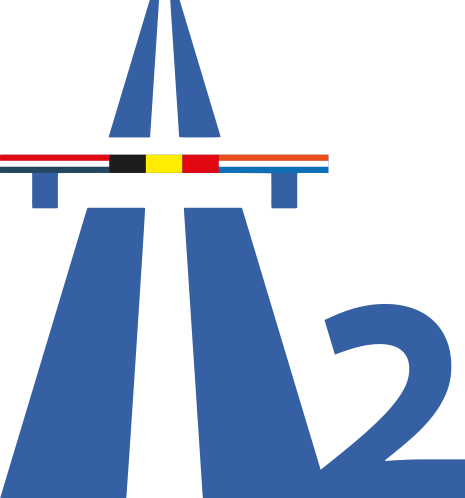DATS 24 is preparing the infrastructure for tomorrow's mobility, and is opening two new...
The creation of a single European transport area that is efficient, sustainable and of added value has been envisaged by the European Union as part of its common transport policy. The development of a trans-European transport network contributes to the creation of the single European transport area by removing barriers and bottlenecks and strengthening the social, economic and territorial cohesion of the European Union. The trans-European transport network comprises besides transport infrastructures (roads, railways, inland waterways, maritime and air transport) also telematic applications and means to promote the efficient management and use of such infrastructures.
The trans-European transport network comprises a core network of 9 European transport corridors which connect the most important European transport nodes. Three of these European transport corridors are passing through the Netherlands, Belgium and Luxembourg connecting the European transport nodes Amsterdam, Rotterdam, Antwerp, Brussels, Luxembourg with other European transport nodes:
“North Sea – Baltic” transport corridor:
- EU connection: East (Tallinn, Warsaw) – West (Amsterdam, Brussels) comprises sections of:
- A4/E19 (Amsterdam-Breda), A1/E231/E30 (Amsterdam-Enschede) (the Netherlands)
- A1/E19 (Breda-Brussels), A3/E40 (Brussels-Liège) (Belgium)
“North Sea – Mediterranean” transport corridor:
- EU connection: North-West (Glasgow, Amsterdam) – South (Paris, Marseille) comprises sections of:
- A4/E19 (Amsterdam-Breda), A58 (Breda-Middelburg) (the Netherlands)
- A1/E19 (Breda-Antwerp), A4/E411/E25 (Brussels-Luxembourg), A10/E40 (Bruges-Brussels), A14/E17 (Antwerp-Lille) (Belgium)
- A3/A6/E25 (Luxembourg)
“Rhine – Alpine” transport corridor:
- EU connection: West (Rotterdam, Bruges) – South (Genova) connection comprises sections of:
- A15/E35 (Rotterdam-Nijmegen), A16/E19 (Rotterdam-Breda), A58 (Breda-Middelburg) (the Netherlands)
- A10/A3/E40 (Bruges-Liège) (Belgium)
The European Union, through the Connecting Europe Facility funding programme, enables infrastructure investments along these transport corridors, among others for alternative fuels. The alternative fuels infrastructure directive provides a framework of measures for the deployment of alternative fuels infrastructure.
The development of hydrogen refuelling infrastructure along the Benelux sections of the trans-European transport corridors has been limited to few initiatives. The public hydrogen refuelling stations at Rhoon and Arnhem (the Netherlands) have been established through the Connecting Europe Facility funding programme, whereas the other public hydrogen refuelling stations in Helmond, The Hague (the Netherlands) and Zaventem, Halle (Belgium) where supported by the Horizon 2020 and INTERREG programme.

